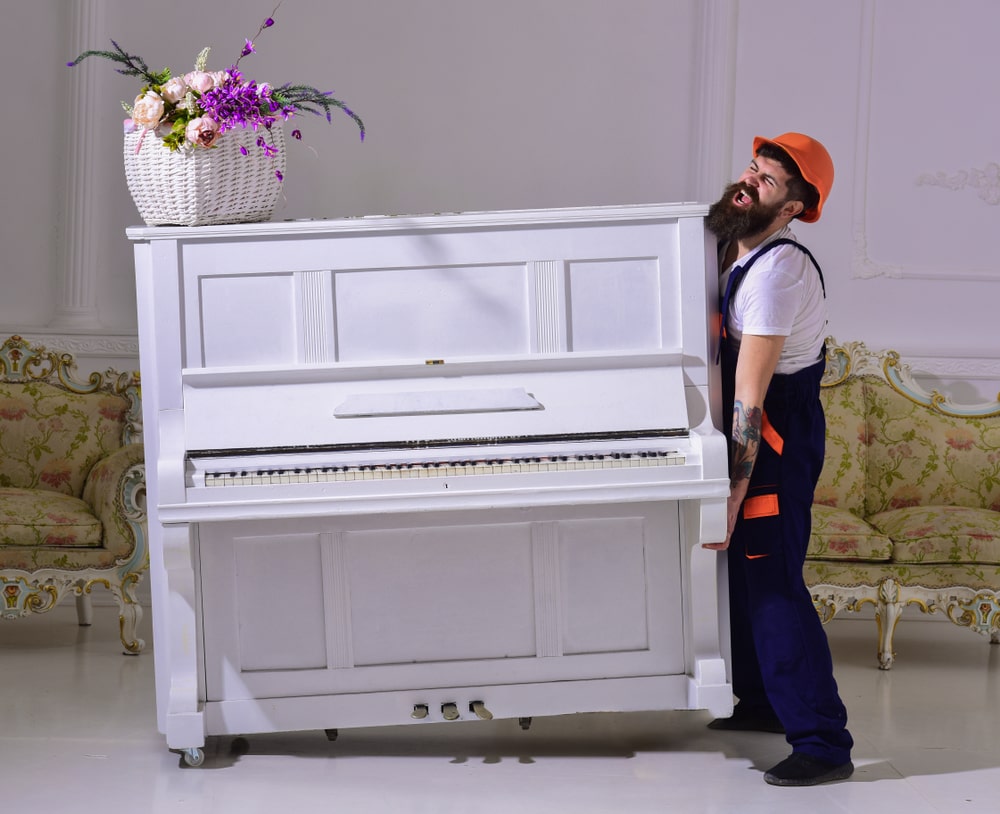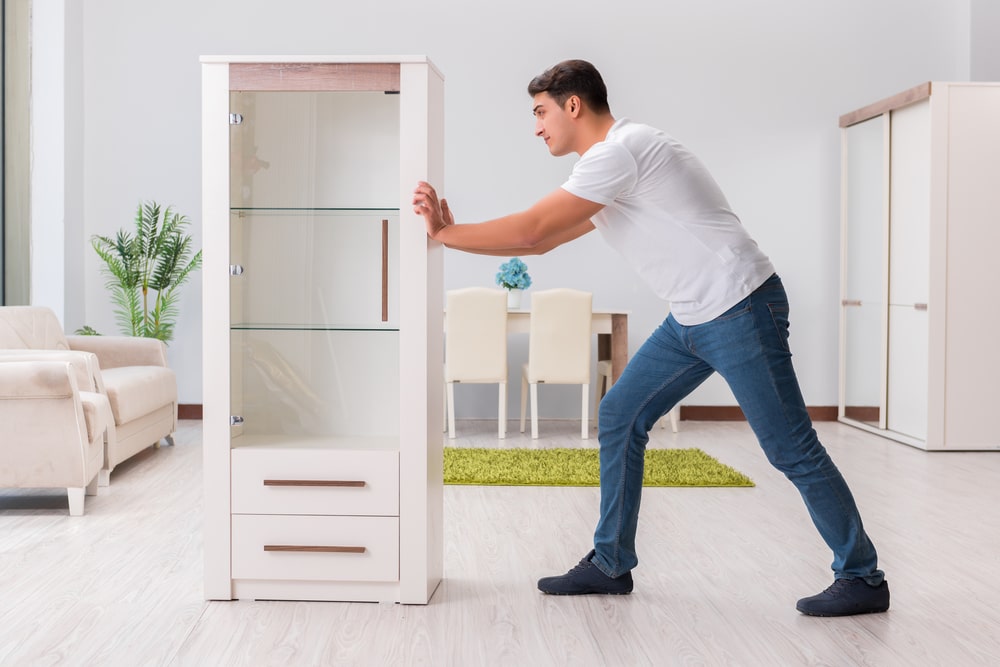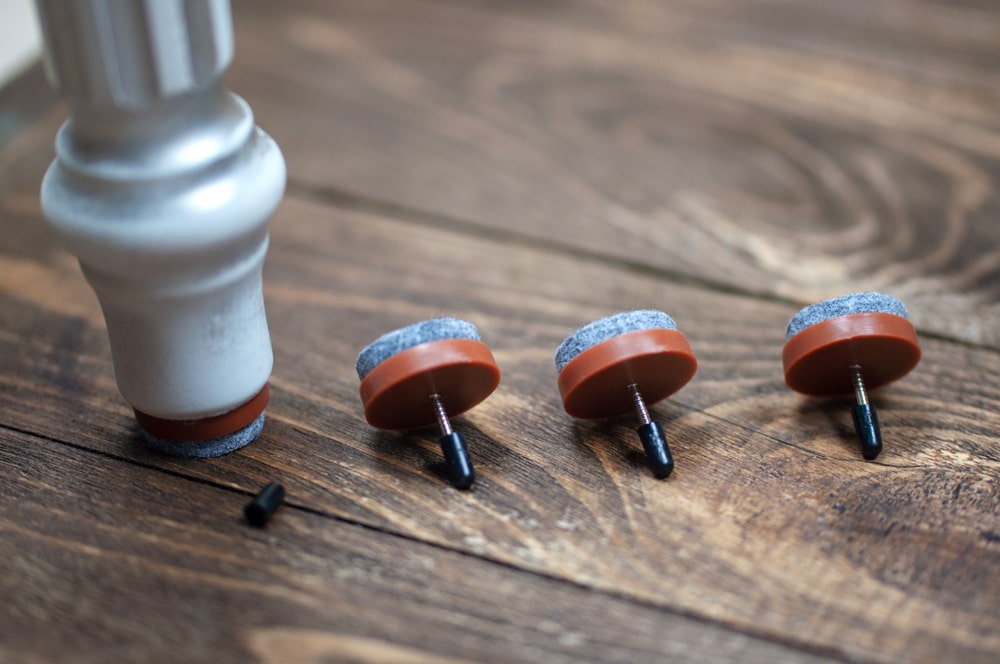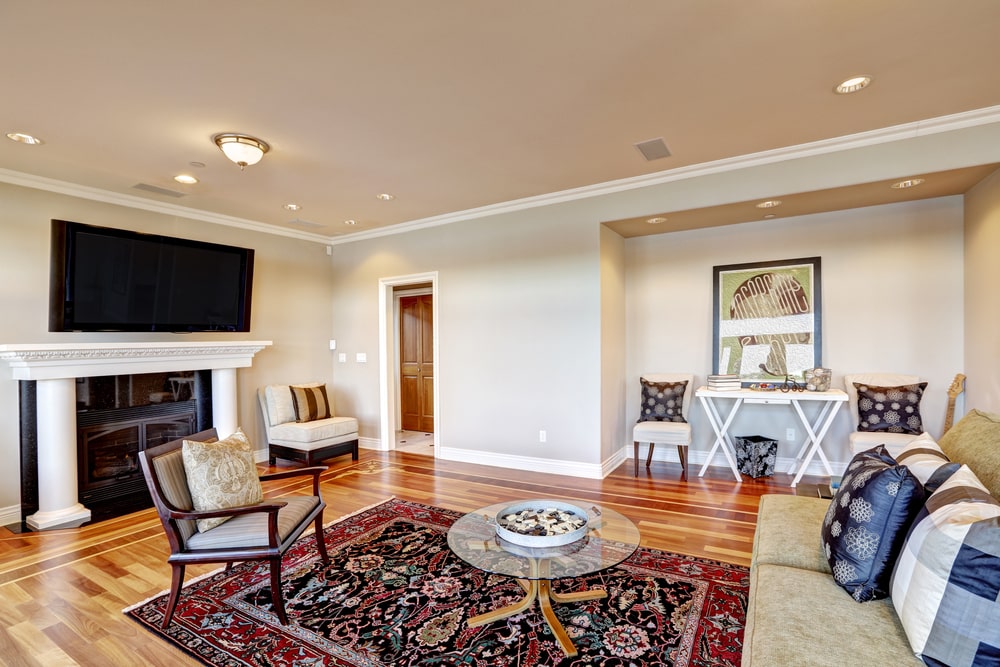
Wood flooring is simply beautiful; it has that timeless grace that you just cannot replicate. With the right care, it can add to the value of your home. Unfortunately, wood flooring is easy to damage, and there are “enemies” at every step, including your very own furniture. In this article, we’re going to discuss just how to protect wood flooring from furniture in 2021.
Why Should You Worry About Protecting Wood Flooring From Furniture?
When it comes to wood flooring maintenance, people talk a lot about outside contaminants such as dirt, water, sand, and so on. However, most of the time, the real problem is the heavy furniture in your room.
Furniture legs can push dust and gravel right into the wooden floor finish. Moving heavy pieces of furniture can cause dents. In case you’ve already shoved that heavy piano and dented the wood flooring, check our guide on how to easily fix dents in a hardwood floor
The most common damage -scratching- occurs when you fail to use wood flooring furniture protectors.
Luckily, it’s pretty easy to protect hardwood floors from furniture. You need to be a little more careful, that’s all.
To make it easy for you, how about you follow this list?
Protect Wood Flooring From Furniture in 6 Steps
Here are 6 easy steps to protect wood flooring from furniture: don’t drag, drop, haul and push heavy furniture around, use furniture feet protectors, Incorporate carpets in your interior design, assess your furniture feet regularly and keep an eye on your floors and furniture.
Step 1: Don’t drag, drop, haul and push heavy furniture around
With heavy pieces of furniture, it’s easy to forget to lift when you’re moving items while cleaning or decorating. It’s often easier than enlisting some help, but it comes at a high cost: scuffing.
Wherever possible, ask a friend (or two!) to help you lift heavy furniture on wood floors to their new location. It may delay things, but it will keep your wood flooring safe from damage.

Keep an eye on debris and dirt that could hide under the furniture. If they get caught between the furniture legs and the floor, they’ll produce heavy scratches when moved.
If these scratches appear, make sure you re-seal them quickly. This way, you’ll avoid any forthcoming tragedy
Step 2: Chair Protectors for Wood Flooring
We are often asked how to stop chairs scratching wooden floors. The answer is simple – use chair pads or glides.
They are made of different kinds of soft materials. You attach them to the chair legs for a much smoother contact with the floor.
Introducing this protection to your chairs means that chairs can be moved without risking the surface of your wood flooring.
Step 3: Pads Again
If you were wondering what to put under furniture on hardwood floors, the answer is the same – furniture pads.
Of course, it’s not just your dining chairs that cause scratches and scuffs. A wide range of furniture feet protectors is available now.
Furniture pads and glider pads are two types of furniture feet protectors. Wood flooring benefit from these because they cushion the feet while raising the furniture slightly off the floor.
Furniture feet protection can be applied in one of three ways.
— Self-adhesive protectors tend to be made from felt or rubber and are often the cheapest option. The drawback of this easy-to-apply method is that they simply do not last long.
— Slip-on feet protectors are typically made from rubber and last much longer. Simply slip it on a furniture leg, and the wooden floor is protected. As great as this option is, they look strange and might spoil your 2021 interior design
— The most secure and longest-lasting, by far, are tap-on (nail-on) pads. Since they are attached to the furniture leg using a screw, there is a risk of scratching if not installed correctly. However, they will resist in time and offer a reliable protection

With a bit of effort, you can create your protective pads for furniture. All you need is some old quilts or blankets and a pair of scissors. Cut according to the size of the legs and place it beneath the furniture leg. This won’t necessarily have the ‘staying power’ of shop-bought alternatives but is an effective solution for a limited budget. It’s also the quickest fix for protecting your wooden flooring.
Step 4: Incorporate carpets in your Interior Design
If you don’t like the idea of pads and are still scratching your head about what to put under furniture to protect your wood flooring, how about carpets and rugs?
They are making a big come-back in interior design in 2021, and they can also serve as reliable furniture feet protectors for wood flooring. For example, you can experiment with maximalism and try some mad stripes; or you can keep it classy with a vintage rug. Either way, your furniture will surely love it.

Rugs are perfect for rolling chairs. If you’re still working from home following the Coronavirus pandemic and have decorated a friendly little home office, consider putting a rug under the chair. It will protect the floor from rolling around all day on your favourite chair.
A few rugs will infuse your room with personality and colour. You’ll see.
Step 5: Assess your furniture feet regularly
If you genuinely want to protect wood flooring from furniture, prevention is vital.
Check the feet of your old furniture regularly. Look out for rough edges on the base, as these can lead to scratches or gauges.
To deal with these, you’ll need a sandpaper sheet. Sand lightly until you achieve a smooth surface. If you have a sanding tool, such as a mouse, you can use that here to speed things up.
Rule 6: Stay aware
The final step on how to protect hardwood floors from furniture scratches is probably the most important one.
Keep an eye on your floors and furniture! Sometimes, the best way to protect wooden floors from furniture is to move the furniture. Yes, it sounds contradictory, but heavy furniture sitting in the same place for years won’t do good to your flooring either.
Consider redecorating once in a few years and carefully move the furniture around to redistribute the weight on your floor.
Adopting a proactive approach to the treatment of your hardware floor can pay dividends. Plus, it’s the only sure-fire way to ensure your wood flooring looks as great on Day 1 as Day 10,000.
As is often the case, prevention is much easier than cure. In this case, however, it’s also quicker and cheaper too.Be sure to contact ESB Flooring for more guidance on protecting your wood flooring from furniture if you need it!
| Mon-Fri | 8:00AM – 5:00PM |
| Saturday | 10:00AM – 4:00PM |
| Sunday | 11:00AM – 3:00PM |





.svg)
.svg)